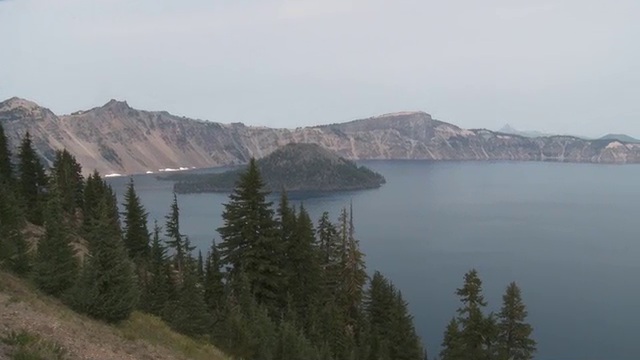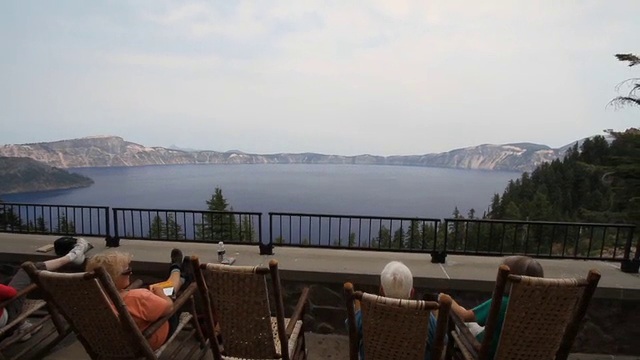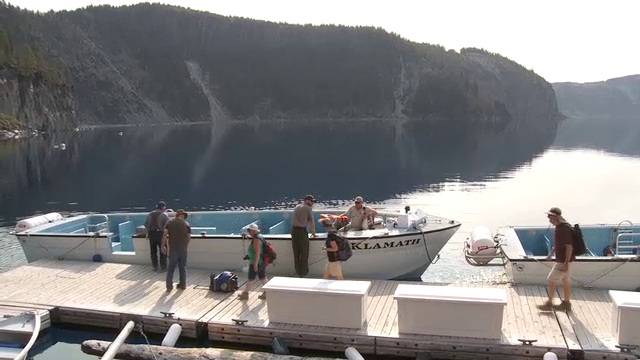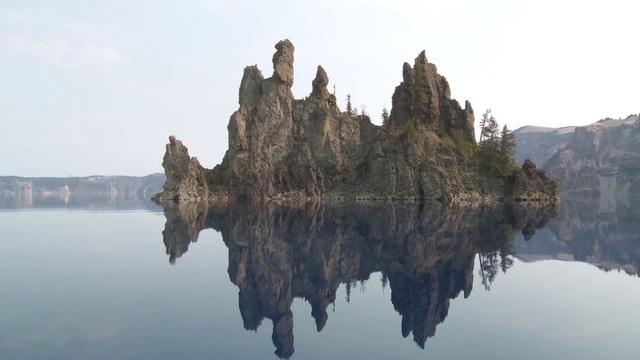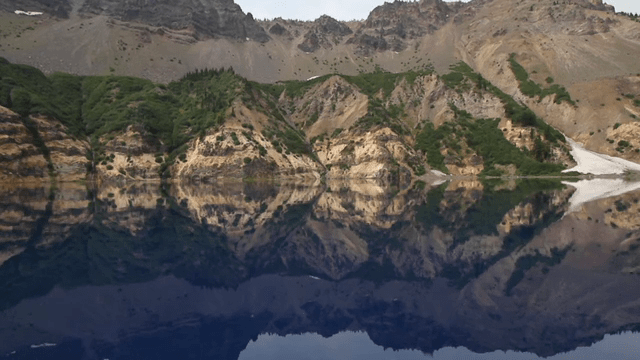Crater Lake, in the Southern Oregon Cascades, is a paradise for those who savor scenic driving, camping, hiking, and wildlife watching. The lake’s translucent surface and dark, cold depths make for a scene of striking beauty. It is a place of moody moments, and like countless visitors I am overwhelmed by its size and awed by its sublime beauty. Its brilliant blue is magical – even enchanting – and yet its history speaks of ancient and fiery times.
Our recent visit explored the lake from a water-level point of view on the Crater Lake Boat Tour, an up-close look at Oregon’s striking azure beauty.
Many people begin their visit at Crater Lake Lodge – the stone and timber destination for nearly a century – where folks will grab a bite, relax and unwind, spend the night and soak up the gorgeous scenery that lies some two thousand feet below. It’s a distant scenery, so grab your day pack, lace up hiking boots, don’t forget water and a camera; if you want a closer view to Crater Lake, you must hike the trail to Cleetwood Cove. The 700-foot elevation drop on the Cleetwood Trail is done in a series of switchbacks, but it doesn’t take long to reach the boat dock where Captain Rick and Ranger Dave will welcome you aboard.
Hikers reserve a spot in advance to step aboard one of the eight daily Crater Lake boat tours. The boats seat up to 48 passengers and sport names like Rogue, Klamath and Umpqua. “Mount Mazama’s eruption was 100 times as powerful as the eruption of Mount St. Helens in 1980. Today its ash lies scattered across eight states and three Canadian provinces,” said park ranger Dave Harrison, who hosted our two-hour voyage across the six-mile-wide lake.
As we slowly trolled the azure water, all eyes of our two-score party were stunned by the size of the lake and the 6-mile distance from shore to shore – a gigantic scene you cannot grasp from the high rim. Harrison noted that Crater Lake – when it was Mount Mazama – was taller than Mt Hood. The tour motored near the rugged lake shoreline and offered unique points of view. “When you look up the sides of the crater wall, you’re actually looking at the insides of the mountain that started forming about four hundred thousand years ago. The different colored layers, the milky white, tan, and dark gray that you see, those are the ages of the lava as the mountain grew taller,” said Harrison.
He called the lake a “window on time” at places like the Devil’s Backbone, a rocky spine created as surface cracks allowed lava to ooze up and then freeze. It is now resistant to erosion from sun, wind, and water. It took five hundred years for the Mount Mazama caldera to become a lake, fed by 44 feet of snow fall that produce 30 billion gallons of water each year. The azure blue color is in part a reflection of the sky, but the 2,000-foot-depth and clarity of the lake contribute to the rich color too.
As we wrapped up our journey, Harrison left us with this lingering thought: “It’s good to protect places like this and watch the natural processes of life continue without human interruption. Many people drive to the lake, but never take time to explore it from the water – in fact, it’s surprising how few people know that boat tours on Crater Lake are also part of this special recreation scene.”
It’s the immensity of the lake, the surrounding land and what happened here thousands of years ago that prompts a respectful and contemplative silence that lasts long after the boat has returned to the dock. I was surprised to learn that less than one percent of Crater Lake visitors actually make the trek to Cleetwood Cove to experience the boat tour, which offers an unmatched educational experience and stunning lesson on the geologic history of the northwest.
Other overnight options beyond Crater Lake Lodge include two National Park campgrounds. Consider stopping by the nearby Joseph Stewart State Park Recreation Area and Campground when you’re in the area.
Editor’s note: If you’re flying in to Oregon, check out Crater Lake airport in nearby Klamath Falls.
